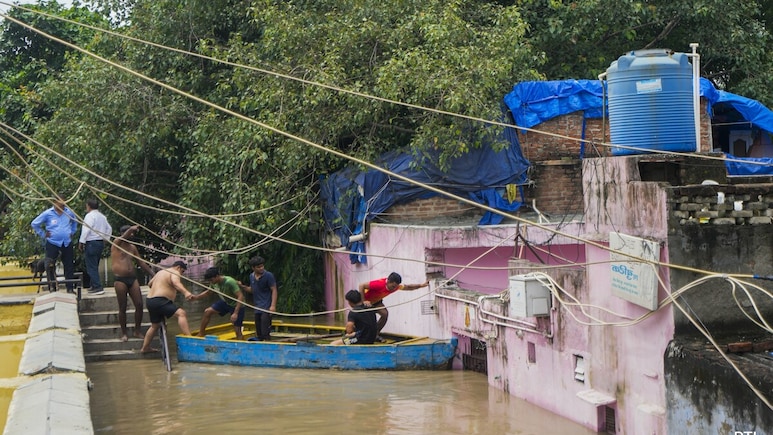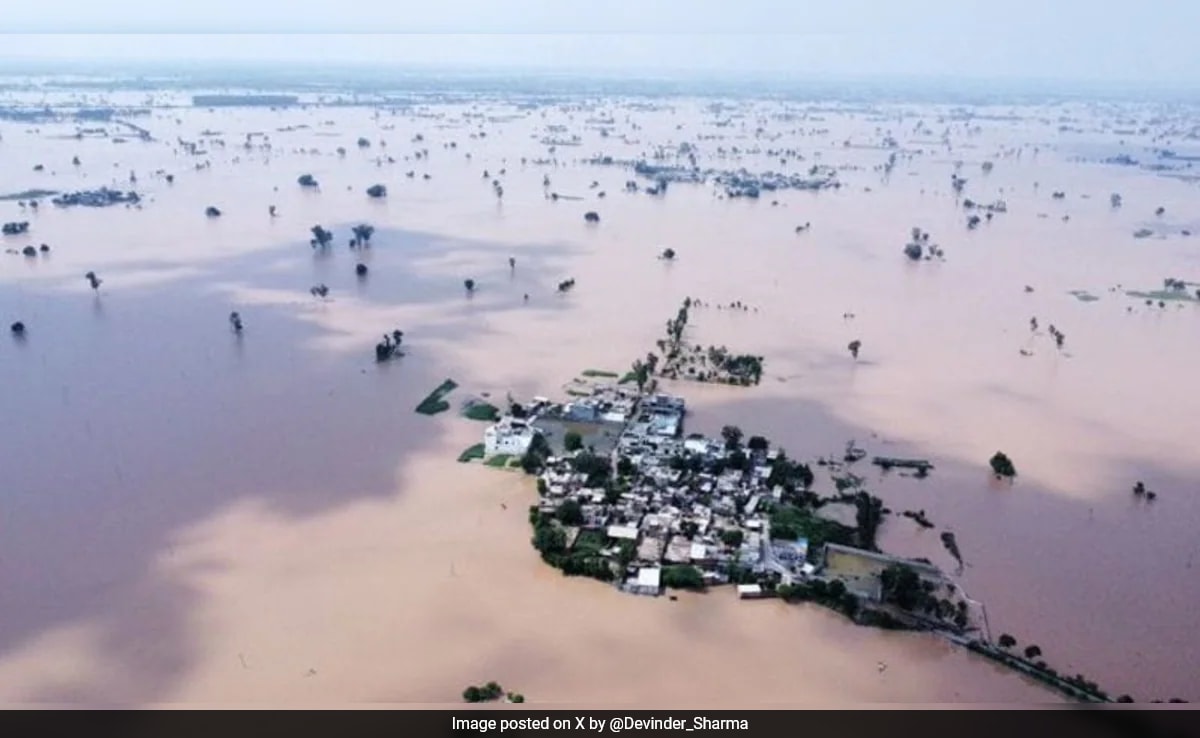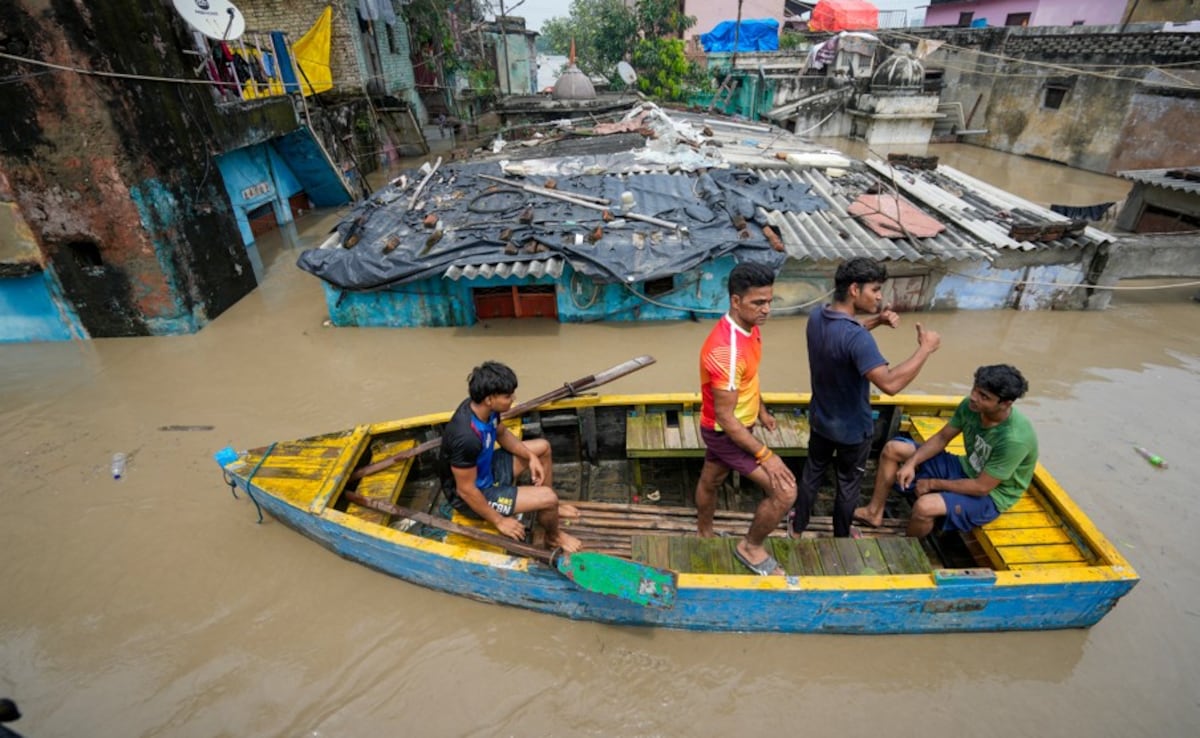
The southwest monsoon will see a delayed withdrawal - possibly September 17 or even early-October - the India Meteorological Department said this week, indicating that rain-battered northern states like Punjab, Himachal Pradesh, and Uttarakhand will likely battle more floods.
"Given favourable monsoon conditions, we anticipate withdrawal will begin after September 17 and potentially extend into October," IMD Director-General Dr Mrutyunjay Mohapatra said.
Normally the monsoon begins rolling back in the first week of September. But the trend of the past five years reinforces the IMD's 2025 announcement. Last year, for example, the monsoon withdrew from Delhi on October 2 and from the country on October 15, according to the IMD.
READ | Cloudbursts, Flash Floods, Deficits: India's Extreme Climate This Monsoon
In 2023, 2022, 2021, and 2020 the withdrawal date was late-September or early October.
Late withdrawal date for 2025 underlines the IMD's observations - that the past four decades show a trend for more rainfall in September leading to delayed monsoon rollback.
Since the monsoon officially began in June, parts of northern India - Punjab, Himachal Pradesh, Delhi, and Uttarakhand - have been battered by heavier-than-normal rainfall, causing deaths and devastation, including crores of rupees of damages to buildings, infrastructure, and crops.
Floods In Himachal
For example, in Himachal - which is battling yet another year of landslides, cloudbursts, and flash floods - over 340 people have died in rain-related incidents this year alone, and cumulative damage since June 20, when the monsoon began, is a staggering Rs 3,525 crore.
And there appears to be no respite in store. Late Wednesday the India Meteorological Department issued 'heavy' to 'very heavy' rainfall warnings across several districts, cautioning residents against going near rivers, landslide-prone zones, or low-lying areas.

Floods have caused over Rs 3,500 crore in damages in Himachal this year alone.
The IMD has issued an 'orange alert' for 'heavy to very heavy' rain for Chamba, Bilaspur, Sirmaur, Hamirpur, and Mandi districts, and a 'yellow' alert for Kullu, Kinnaur, and Lahaul-Spiti areas.
Data from June 1 to September 3 shows Himachal received 40 per cent above-normal rainfall this season. Shimla got 110 per cent more than normal, and other districts between 50 per cent and 78 per cent more than average. But Lahaul-Spiti recorded 13 per cent below normal.
Punjab's Worst Floods In 37 Years
Punjab, meanwhile, faces its worst floods since 1988.
All 23 districts in the state are affected and 30 people have died. The floods were caused by the overflowing of the Sutlej, Beas, and Ravi rivers due to heavy rain in catchment areas in Himachal.

Over 3.5 lakh people have been affected across the state and crops on 1.48 lakh hectares of land have been destroyed, officials told news agency PTI. Volunteers from NGOs and organisations involved in rescue and relief works have said farmlands have been transformed into small lakes - each 10 feet deep - forcing them to rely on boats to access flooded villages.
Yamuna Overflows, Delhi Deluge
The national capital region has also struggled with heavy rainfall.

The Yamuna is flowing above the danger level in Delhi. Photo: PTI
Floodwaters entered homes in the Delhi-NCR region as the water level of the Yamuna crossed the danger mark due to heavy overnight rains. From shopkeepers in Majnu ka Tila to families in Madanpur Khadar and Badarpur, many now live in makeshift shelters as they wait for the waters to recede.
READ | Floodwater Enters Delhi Homes As Yamuna Crosses Danger Mark
However, for displaced families, in Delhi and elsewhere, the real struggle will begin once rivers and floodwaters recedes, for they must then pick up, literally, the pieces of their lives, digging them out from under piles of debris in some cases, and try to get back to normal, till next year.
With input from agencies
NDTV is now available on WhatsApp channels. Click on the link to get all the latest updates from NDTV on your chat.
Track Latest News Live on NDTV.com and get news updates from India and around the world

